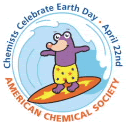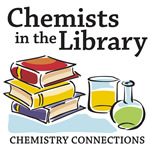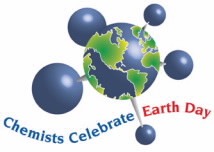Online Resources
This is a collection of online resources (websites, software, etc.). A separate collection of Print Resources is also available.
Key: E=Elementary (K–5), I=Intermediate (6–8), HS=High School (9–12), C=College, G=General Public
- Digital Library for Earth System Education (DLESE) (E, I, HS, C, G)
- DLESE is a geoscience community resource that supports teaching and learning about the Earth system. It is funded by the National Science Foundation and is being built by a community of educators, students, and scientists to support Earth system education at all levels and in both formal and informal settings. Provided by: National Center for Atmospheric Research (NCAR).
- EEK! — Water Wonders (E)
- Part of the Environmental Education for Kids web site, learn about the path to cleaner water, groundwater, lakes, the water cycle, and conservation tips. Provided by: Wisconsin Department of Natural Resources.
- Environmental Literacy Council — Water (I, HS, C, G)
- An independent, non-profit organization, the Council gives teachers the tools to help students develop environmental literacy: a fundamental understanding of the systems of the world, both living and non-living, along with the analytical skills needed to weigh scientific evidence and policy choices. Provided by: Environmental Literacy Council.
- The GLOBE Program (E, I, HS) (In English, Spanish, French, Russian, Arabic, German, Dutch)
- GLOBE is a worldwide hands-on, primary and secondary school-based science and education program. GLOBE provides students with the opportunity to learn by: taking scientifically valid measurements in the fields of atmosphere, hydrology, soils, and land cover; reporting their data through the Internet; creating maps and graphs on the free interactive Web site to analyze data sets; and collaborating with scientists and other GLOBE students around the world. Provided by: University Corporation for Atmospheric Research and Colorado State University.
- H2O — The Mystery, Art, and Science of Water (I, HS, G)
- This site offers a multi-disciplinary examination of the nature, properties, place, significance, importance, and role of water in the life and culture of this planet. Provided by: Chris Witcombe and Sang Hwang, Sweet Briar College, Virginia.
- Martin Waugh’s Liquid Sculpture — Water Drop Art (G)
- Martin Waugh combines art and science to capture nature’s infinite beauty. Martin’s creative uses of high-speed photography make it possible to capture the smooth and effortless curves of liquid. By varying the size, speed and position of drops, as well as the color, viscosity, and surface tension, Martin creates a panorama of color, movement and intrigue. Provided by: Martin Waugh.
- Nature of Water — Properties of Water (I, HS, C, G)
- Water is a magical substance. It is both simple and complex. A water molecule itself is simple, made up of 3 atoms — two hydrogen and one oxygen, H2O. The makeup of these building blocks produces a molecule with almost magical properties, which provides the basis for its wide variety of uses. Provided by: Environment Canada.
- The pH Factor (E, I) (In English, Chinese, and Japanese)
- The pH Factor is designed as a resource to help elementary and middle school teachers introduce acids and bases to their students. Materials are organized using a conceptual framework called the Seven E’s: Excite, Explore, Explain, Expand, Extend, Exchange, and Examine. Provided by: Miami Museum of Science.
- U.S. Environmental Protection Agency — Water (I, HS, C, G)
- The mission of the Environmental Protection Agency is to protect human health and the
environment. Since 1970, EPA has been working for a cleaner, healthier environment for
the American people.
- Water for Kids (E, I)
- This site includes projects, art, and experiments to involve kids and students with environmental protection.
- Environmental Kids Club — Water (E, I)
- Water is everywhere — in the sky, in the ground, and in our homes — and we use it every day. Learn how to care for this important resource.
- Water Conserve: Water Conservation Portal (I, HS, C, G)
- Water Conserve is an internet search tool that provides access to reviewed water conservation news, information retrieval tools, and original analysis and action opportunities. This site is for noncommercial, educational purposes only. Provided by: Ecological Internet.
- Water: H2O=Life (E, I, HS, C, G)
- The Water: H20=Life exhibition offers visitors an in-depth look at one of the most
important substances and environmental issues that we face. This site illuminates
one of the most pressing challenges of the 21st century: humanity’s sustainable
management and use of the life-giving, but finite, resource, water.
Provided by: American Museum of Natural History.
- Milstein Hall of Ocean Life — Properties of Water (I, HS, C, G)
- This site has resources about the characteristics of water and how marine life forms adapt to them.
- OLogy — Water: H2O=Life (E, I)
- OLogy, the Museum’s Web site for kids ages seven through twelve, is based on the premise that “everyone wants to know something,” and is designed as a place for kids to explore, ask questions, get answers, meet OLogists, play games, and see what other kids are interested in.
- Water Quality Service Learning Program (I) (Student materials in English and Spanish)
- This site is designed to introduce teachers to an innovative student-centered science investigation focused on California’s growing problem of polluted runoff. This site contains free, ready-to-use lesson plans; and online teacher support. Provided by: California Water Resources Control Board.
- Water Science for Schools (E, I, HS, C, G) (In English and Spanish)
- Offers information on many aspects of water, along with pictures, data, maps, and an interactive center where you share ideas and test your water knowledge. Investigate the water cycle (in over 60 languages). Provided by: U.S. Geological Survey.
- Water Structure and Science (HS, C, G)
- Water (H2O) is often perceived to be ordinary as it is transparent, odorless, tasteless and ubiquitous. It is the simplest compound of the two most common reactive elements, consisting of just two hydrogen atoms attached to a single oxygen atom. Indeed, very few molecules are smaller or lighter. Liquid water, however, is the most extraordinary substance. Although we drink it, wash, fish and swim in it, and cook with it, we nearly always overlook the special relationship it has with our lives. Provided by: Dr. Martin Chaplin, Chemist, London South Bank University.


